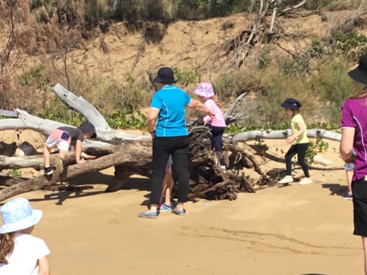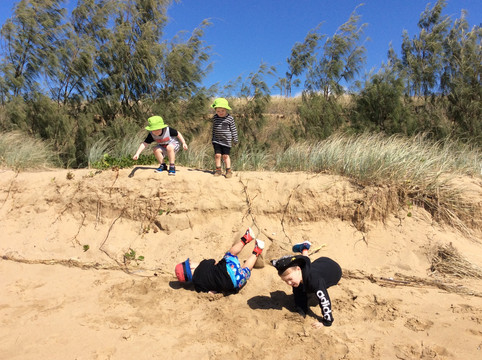risky play done right
- marketingmafia
- May 11, 2023
- 4 min read

The world of children has changed. Our society’s fixation on safety and no-risk play starts in the early years and continues as children grow older. We protect our children, and in doing so we remove them from the natural environment and move indoors. In our desire to keep children safe, we create play environments that are devoid of adventure and interest.
To be able to effectively learn, children need to engage in play that involves and immerses them. Too often risk is taken vicariously through a screen, and rarely will the child actually have to climb a tree, risk a scraped knee, or even come into contact with mud or a splash of water from a cloud burst. Yet we all know these were invaluable lessons for us as we grew up.
Risky play can be defined as a thrilling and exciting activity that involves a risk of physical injury, and play that provides opportunities for challenge, testing limits, exploring boundaries, and learning about injury risk. Children are naturally programmed to keep stretching themselves until they reach maturity and the peak of their abilities. Being adventurous is about creating opportunities for children to explore and test their own capacities, to manage risk, and to grow as capable, resourceful and resilient people.
Why is Risky Play Important?
Risky play provides children with the opportunity to assess risk and manage sticky situations. These can then turn into learning experiences, like young children learning how to walk, run, climb or ride a bike. Learning to do these things involves some risk, but they are important in the overall development of a child.
It helps children develop less fear. Children who do not engage in risky play are more likely to have fear of movement and feel uncomfortable in their own body. This will make them less willing to try new things in the future. They could also be more accident prone and anxious when facing new situations outside their comfort zones.
Swinging, climbing, rolling, hanging and sliding are not only fun for children but are also essential for their motor skills, balance, coordination, and body awareness. It increases children’s physical skills and motor skills. It also teaches them about their own limits and how to deal with risks in the future.
Children need to, and should, take risks in order to explore limits, have new experiences, and develop their capacities. A strong motivation to respond to challenges involving a risk of injury helps them learn how to walk, climb stairs, and ride bicycles. As they grow and develop, they will have to make choices about what is safe to attempt and what is not.
Risky play develops self-confidence and wellbeing. It becomes a source of pleasure for the child as they foster new learning experiences. It gives kids a sense of accomplishment and fun, and encourages creativity, inventiveness, curiosity and problem solving.
It teaches children to understand the consequences of their actions. Mistakes and failures are learning opportunities, and the experience provides the foundation that children need to become persistent, resourceful and resilient. Immediate feedback and tangible results teach lessons that can’t be learned by watching TV or playing games online. Risky play, in essence, teaches children to look after themselves.
Identifying Risks and Hazards
No play space is risk-free. No matter how much we try to remove the risk of children being hurt, children (and adults) can still get hurt. We can have the super smooth soft-fall surfaces in our children’s centres and school playgrounds, but when children walk out into the real world the surfaces they come into contact with are anything but that. The greater risk is not providing children with the skills and abilities to identify and mitigate risk when they come across it so they can engage with the big wide world.
At Skippy’s, we believe that if children are to experience the benefits of risk and challenge in a supervised setting, a positive approach to risk is required. For care and service providers, this means moving away from a risk averse approach where children’s play/learning experiences are restricted, and moving to a more holistic risk-benefit model. This approach improves the developmental opportunities for children by allowing them to take acceptable risks, without putting them in undue danger or serious harm. It allows educators to thoughtfully consider the benefits of an activity, experience, facility or structure, alongside the potential risks and determine what is reasonable and what is not.
A risk is something that is possible to negotiate and may be appropriate for particular situations and children, as opposed to a hazard, which is something that is inherently dangerous and needs to be remedied, such as a climbing structure with sharp edges or loose boards that could seriously injure children if they play on it. At Skippy’s, we combine a high standard of Educator training with soundly developed, and regularly reviewed and updated, procedures to identify and manage both risks and hazards, to ensure the best holistic educational outcomes for our children. We teach them to recognise, understand and assess risk, as opposed to avoiding and fearing it, so that they can reap the benefits of risky play done right.
Our Schoolies and Kindy children love to climb trees and jump off sand banks whilst out and about in the community with their Educators! Look how high they climb, and how much fun they’re having!



















